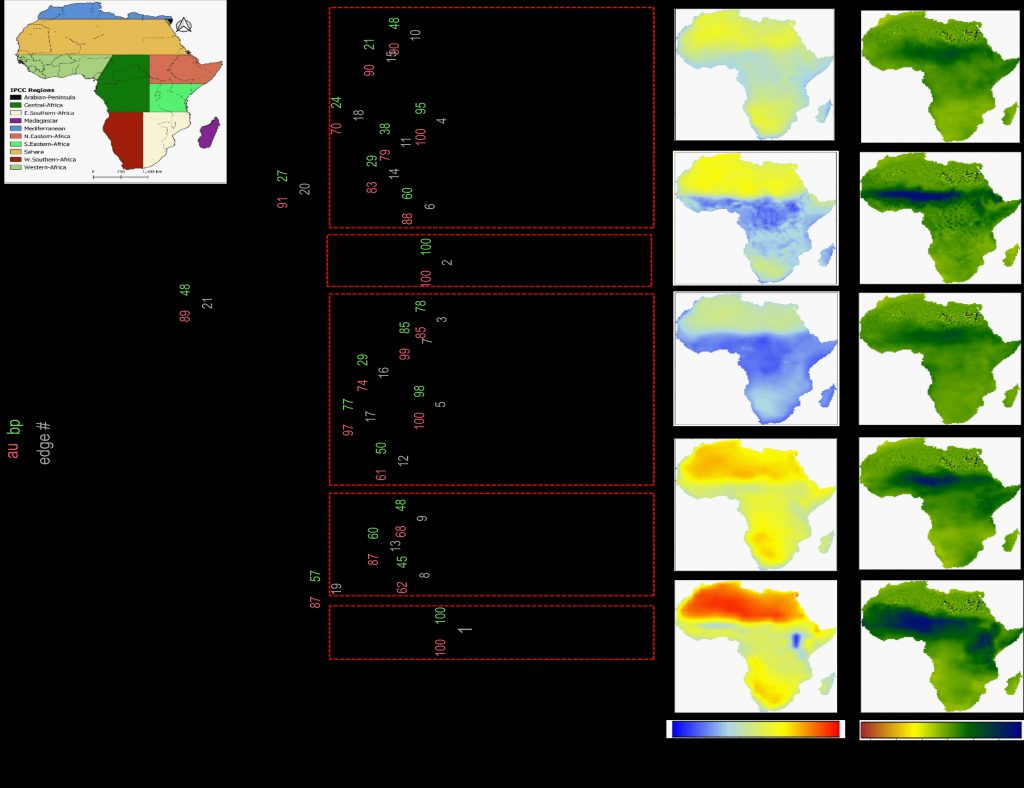Submission 2023
| Submitted by: | Sarah Namiiro |
| Department: | Renewable Resources |
| Faculty: | Agricultural, Life & Environmental Sciences |
There are numerous general circulation models (GCMs) developed to simulate past climate and project future climate. There are even more possible simulations for future climate. In my study, I selected 23 models and analyzed their projections for mean annual temperature (MAT) and mean annual precipitation (MAP) under the shared socio-economic pathway 2 “middle of the road” (SSP2-4.5) characterized by medium challenges to mitigation and adaptation with global warming capped to 4.5°C. The selected future period was 2041-2060. Using hierarchical cluster analysis I classified the GCMs into five groups (red boxes) based on the similarity in projections. I visualized the average change in MAT and MAP as projected by the models in the clusters. Generally, the models predicted similar spatial patterns of MAT and MAP change however, they depicted varying magnitudes. Referring to IPCC’s regions of Africa (inset), the projected hot and driest climates are in the Mediterranean, Sahara and West-southern Africa. On the other hand, Central and Western Africa were projected to have comparably cool and wet climates. The analysis visualized guides researchers and science communicators in the selection of models that predict “best”, “middle” and “worst” case scenarios of future climate change. The image is part of my wider research to develop a comprehensive climate database for Africa.

